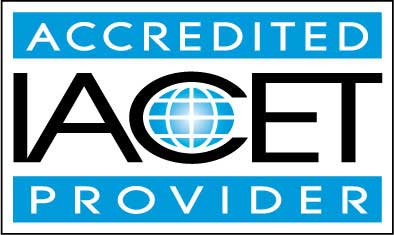Course Description
What is Microsoft Access 2019?
Unless you've used Microsoft Access before, you may be unclear as to what exactly it is and how you'll use it. Microsoft Excel, PowerPoint, and Word are very popular programs, so we're very familiar with them, if only by name. Access, however, isn't as widely used or discussed, so before we begin this course, it's important to look at what this software program does, and how it will help you.
Microsoft Access is an information management tool that allows you to store, report, and analyze information. If you're trying to use Excel to manage large amounts of information, then chances are Microsoft Access will be helpful to you.
You see, a spreadsheet program such as Excel is great if you want to maintain and calculate small bits of information. It's easy enough to use when you want to create a spreadsheet, enter data, create formulas, etc.
Excel makes it very easy to sort, filter, and format quickly. That said, though, Excel is not ideal for handling hundreds of records if you have one thing you need to track. It's easy to have errors, and that makes analysis, summing, and reporting difficult.
- Completely Online
- Self-Paced
- Printable Lessons
- Full HD Video

- 6 Months to Complete
- 24/7 Availability
- Start Anytime
- PC & Mac Compatible
- Android & iOS Friendly
- Accredited CEUs

Learning Outcomes
- Define the steps required to create and manage a database using Microsoft Access 2019, demonstrating proficiency in its core components such as tables, queries, forms, reports, and macros.
- Identify and utilize at least three new features introduced in Microsoft Access 2019, including their benefits for data management tasks.
- Demonstrate the ability to set up a Microsoft Access 2019 database by adhering to specified storage and object limits to ensure efficient data management and collaboration.
- Identify and describe the minimum system requirements necessary for the optimal installation and operation of Microsoft Access 2019.
- Identify and explain the function of primary and foreign keys in establishing relationships between tables within a relational database.
- Define a database and describe its core components, including tables, fields, and records.
- Define the role of tables, forms, queries, reports, and macros in managing databases within MS Access 2019.
- Demonstrate the ability to create and link multiple tables using unique identifiers to ensure data integrity and reduce redundancy in MS Access 2019.
- Utilize the Backstage View to manage database properties effectively, including optimizing performance and securing data with encryption settings in MS Access 2019.
- Define and customize the Quick Access Toolbar to enhance workflow efficiency by frequently using desired commands in MS Access 2019.
- Demonstrate how to design and populate a table in Access with specified data fields and examples.
- Define the steps to create and name a new database in Microsoft Access.
- Define the purpose and functionality of Design View in Microsoft Access for creating and modifying table structures, including setting data types and validation rules.
- Demonstrate mastery of lesson content at levels of 70% or higher.
Assessment Guide
| Assessment | Points |
|---|---|
| An Introduction | 1 points |
| Lesson 1 Exam | 3 points |
| Lesson 2 Activity | 1 points |
| Lesson 2 Exam | 3 points |
| Lesson 3 Activity | 1 points |
| Lesson 3 Exam | 5 points |
| Lesson 4 Exam | 5 points |
| Lesson 5 Exam | 4 points |
| Lesson 6 Exam | 5 points |
| Lesson 7 Activity | 1 points |
| Lesson 7 Exam | 5 points |
| Lesson 8 Exam | 5 points |
| Lesson 9 Activity | 1 points |
| Lesson 9 Exam | 5 points |
| Lesson 10 Activity | 1 points |
| Lesson 10 Exam | 8 points |
| Lesson 11 Exam | 5 points |
| Lesson 12 Exam | 3 points |
| Lesson 13 Activity | 1 points |
| Lesson 13 Exam | 5 points |
| Lesson 14 Exam | 5 points |
| Lesson 15 Exam | 5 points |
| Lesson 16 Exam | 3 points |
| Lesson 17 Exam | 4 points |
| Lesson 18 Exam | 5 points |
| Lesson 19 Exam | 3 points |
| Lesson 20 Exam | 6 points |
| Lesson 21 Exam | 4 points |
| The Final Exam | 80 points |


